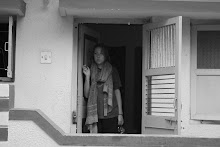“The 4P’s,” the trainer explains, “stand for product, price, place and promotion. They are the key tools to marketing.” The saree-clad women nod attentively to the Marathi translation, and my mouth falls to the ground. Having heard this lesson repeatedly during my days at the McCombs School of Business, it startles me to hear it in the middle of a rural village where children play with tires and cow poop is collected for fuel. It’s the context contrast. I see the women around me, and I feel the hard ground that I’m sitting on, but my mind flies back to a cushiony chair at McCombs.
I am comfortably seated in the laptop and polo shirt saturated classroom, listening to a marketing lecture on the 4Ps. I’m only half listening, too busy asking myself what on earth I’m doing in business school if I want to protect the environment and help reduce poverty. The professor, failing to read my mind, carries on about how to use these marketing tools to increase profits for corporate shareholders. I writhe under the school’s definition of success as profits. A definition, in my mind, frustratingly flawed. I’m ready to leave the business world.
“Leave your tiffins over there, and divide into groups based on your village,” the business trainer instructs. He is having the village women form their own companies for the day to prepare and sell Indian snacks in their local market. They will have to source raw materials, produce the food, price the items, choose a location to sell, and keep records of profit and loss. This activity is part of a rural business training curriculum. It is designed to teach basic business skills to village women with low literacy rates and education levels. The women, despite the heat of the day, are motivated to start their businesses. I, on the other hand, am wondering how they manage the sweltering temperatures as the sweat slowly drips down my back and my eyelids droop in the oppressive heat.
The air conditioning blows in the McCombs classroom, and I shudder in the August manufactured wintriness. Again, I’m not really listening to the lecture, but one year later, my thoughts are of a different nature. This is because I made peace with the business school when I stopped asking, “What I am I doing here?” And started asking, “What can I do here?” I raise my hand to ask the professor about social marketing, a way to use business ‘for good.’ I feel charged about all the potential, alternative applications of business. I’m convinced that business can be used to make the world a better place for those that ought to have a better life.
“Now, how can you use the 4Ps to increase your monthly income?” the trainer asks the group of women. It’s been 5 days of this rural business training, and the women are quick to answer with their newfound business knowledge. I stop thinking about McCombs right then. I am Chariots-of-Fire inspired by the women’s eagerness. They don’t just want improved lives; they’re willing to work for it. They’re willing to convince their husbands to allow them to leave the house for this training; they’re willing to go against a male-dominated culture to start women-owned businesses; they’re willing to face the risks and challenges of entrepreneurship so that their families and communities can get out of poverty. I stop thinking about McCombs and multinational corporations and air-conditioning because this right here is the business world I want to be in.
I feel incredibly lucky to be working with SSP, an organization that develops and strengthens the economic, social, and political competencies of grassroots women’s collectives. With SSP, I get to help launch a rural business school that aims to educate, inspire, and help women and youth grow socially-minded micro-businesses in their villages. We are currently testing potential rural business curricula in the villages of central Maharashtra.
(an article published by Forte Foundation from a few months ago with a similar theme) |
| Training |


